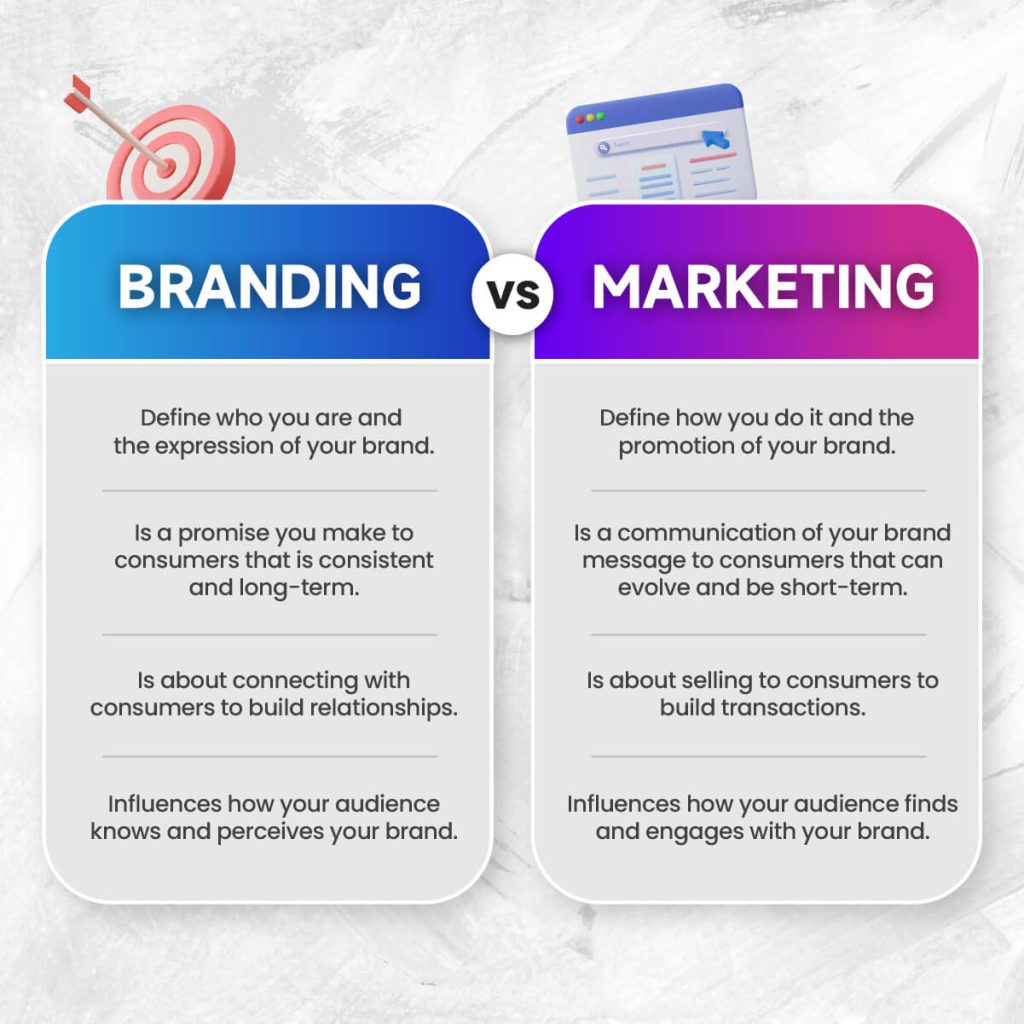When launching a new business, should you focus on marketingor branding first? Discover why marketing often takes the lead for startups and SMEs, and how branding follows to build long-term trust and identity.

When starting a new business, entrepreneurs often face the tough question: “Should I focus on marketing or branding first?”This decision is crucial, especially for startups and small-to-medium enterprises (SMEs) with limited budgets and resources. Both branding and marketing are essential for growth, but the order in which you prioritize them can significantly affect your visibility, revenue, and long-term sustainability. In this article, we’ll explore why marketingshould come first, and how branding can naturally evolve as your business gains traction.
What’s the Difference Between Marketing and Branding?
Before deciding which comes first, it’s important to understand the core difference between marketingand branding. Branding is all about defining your business identity — who you are, what you stand for, your tone of voice, visuals, and the emotional connection you create with your audience. It’s the long-term perception people have of your business.
Marketing, on the other hand, is the set of strategiesand tools you use to promote your product or service. It includes everything from digital ads to content marketing and social media engagement. If branding is the “who,” marketing is the “how” — how you reach customers and persuade them to take action.

Why Marketing Should Come First
For most new businesses, marketing needs to be the first priority. Here’s why: marketingcreates visibility. You need to get your products or services in front of people as quickly as possible. Without marketing, nobody knows you exist — no matter how great your product or brand might be.
Secondly, marketing tends to offer quicker returns. With tools like paid advertising, search engine marketing, and social media, you can drive traffic, generate leads, and even close sales within days or weeks. This is vital for SMEs and startups that need immediate cash flow to survive.Marketing also allows you to test your offer before investing heavily in brand development. You’ll learn what resonates with your target audience, what problems they face, and what language they respond to — insights that become valuable when shaping your brand later on.
Branding Comes After Market Validation
Building a strong brand takes time, consistency, and clarity. It often requires customer insights, feedback, and real-world experience— all of which you’ll gather through marketing. Once your business gains traction and visibility, that’s the perfect time to begin developing your brand.
At this stage, you can begin refining your brand story, tone, and visual identity. You might update your logo, invest in better websitedesign, define your values, and begin to create an emotional experience that connects with your audience. Branding then becomes your loyalty builder, keeping customers coming back for more.
A Practical Approach for Startups and SMEs
If you’re running a startup or SME, here’s a realistic two-phase approach to follow:
✅ Phase 1 – Start with Marketing:
Kick things off with a strong marketing push. Focus on sales-driven messaging and run performance-based campaigns like social media ads, Google Ads, or even livestreaming to drive traffic, leads, and conversions.
✅ Phase 2 – Build Branding Gradually:
Once your business gains traction, start strengthening your brand credibility.
Engage influencers, KOLs, or brand ambassadors to promote your product and highlight its strengths. Reinforce trust with real user feedback, awards, or even patent applications.
Begin developing long-term branding assets like visual identity guidelines, a clear mission/vision, tagline, and emotional branding.
Shift from short-term marketing pushes to storytelling that builds loyalty and long-term connection with your audience.
Benefits of Starting with Marketing
Choosing to focus on marketingfirst offers several advantages:
- Validates your business faster in the real market
- Gathers valuable customer data to guide branding later
- Gives you flexibility to pivot without being locked into a fixed brand identity
- Builds momentum that makes brand-building easier once trust is established
Once your business stabilizes, you’ll have the foundation (and revenue) to invest in branding that truly connects with your ideal audience.
Conclusion
In the early stages of a new business, marketingshould come before branding. It helps you build awareness, attract early customers, and generate income quickly. Branding is still important — but it’s more effective once you understand your market, customer behavior, and unique value proposition. For startups and SMEs, the smartest path is to market first, then brand better later. This strategy ensures your business can survive, adapt, and eventually grow into a memorable brand that stands out.
Share now: